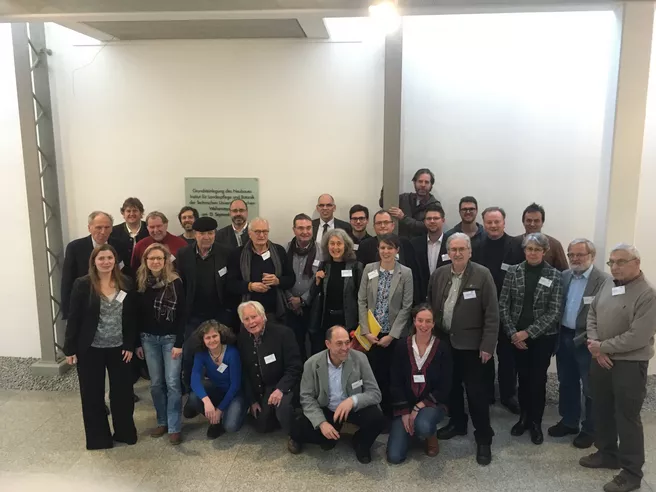On January 18, 2019, the kick-off event of the PHUSICOS concept case Isar took place at the Technical University of Munich, Chair for Strategic Landscape Planning and Management, Germany. Twenty five stakeholders from the most important organisations in the field of river management at the Isar catchment area participate to the meeting, e.g., the Bavarian State Ministry for Food, Agriculture and Forestry, the River Management Department Munich, the River Management Department Weilheim, the District Administration Bad Tölz, WWF, the IsarAlliance, the Society for the Protection of the Mountain Environment, and the Bavarian Fishing Association. The Kick-off was planned to present PHUSICOS goals to the local partners and to serve the needs of the product innovation working group (WP4), of the learning process (WP2), of the governance analysis (WP5) and of the ex-post-analysis of the Living Lab Isar (WP3). During the afternoon, participants worked on four core thematic: the history of the Isar River, the co-design of NBS assessment procedure, an ex-post assessment of the project, and the future of the Isar.
First, the keynote speaker Roland Kriegsch, head of the water management office Weilheim, presented the current restoration measures at the Isar aiming at the improvement of the ecological status, the biological continuity, the reduction of riverbed erosion by sediment management, the conservation of the German tamarisk (Myricaria germanica) and the better usability and accessibility of the riverine area for recreation purposes. The participants then critically discussed the impact of implemented key measures with today's point of view. However, they commented that the measures were at the date of their implementation seen as positive. Furthermore, the participants underscored the dilemma of their valuation. For example, reservoirs and water diversion for hydropower production make in one hand an important contribution for carbon-neutral energy production but in another hand have negative socio-ecological effects on the river system.
In a second step, the participants weighted the Isar restoration goals applying the evaluation scheme for nature-based solutions developed by the University of Napoli (WP4). Interestingly, while all the participants identified the improvement of the ecological status as the most important goal of the Isar restoration, the economic aspects were the less important goals. Some participants mentioned that the interactions between the goals should also be considered.
After these first workshops, the outcomes of the Isar-Plan in Munich were assessed in small groups. Results shows that participants estimated the project as a particularly successful example for river restauration in almost all of the five Ambits of the evaluation catalogue: Risk Reduction, Technical and Feasibility Aspects, Environment & Ecosystem Services, Society and Local Economy. The Participative process was identified as the key driver of the successful project.
The closing panel discussion was about the future of the Isar and its role in the PHUSICOS project. The participants identified the ecological status of the Isar and the sediment management as the current most important issues. The Isar flood protection infrastructure was considered efficient against HQ100 but results of the climate change scenarios suggest better securing the riverine area. Precipitation hotspots should be further analysed and beneficiate from local measures. Participants underscored the limited potential for further NBS implementation at the Isar because of the restricted space available. Consequently, providing land was considered to be a core topic for the future in order to give the Isar more space for natural development and more retention potential to mitigate severe future hydrometeorological events. The group emphasized the need for common goals and more collaboration between the different stakeholders, to solve these issues together. Participants pointed out the importance for engagement of the civil society not to leave water authorities alone and the necessity of joint efforts to put necessary improvements of the river on the top of the political agenda.
To conclude, comparing the demonstrator cases to the concept case Isar, Stakeholders agreed that based on the Isar-Plan experience, the PHUSICOS EU-project should demonstrate how civil engagement can put current challenges on the top of the agenda and leverage NBS implementation.
